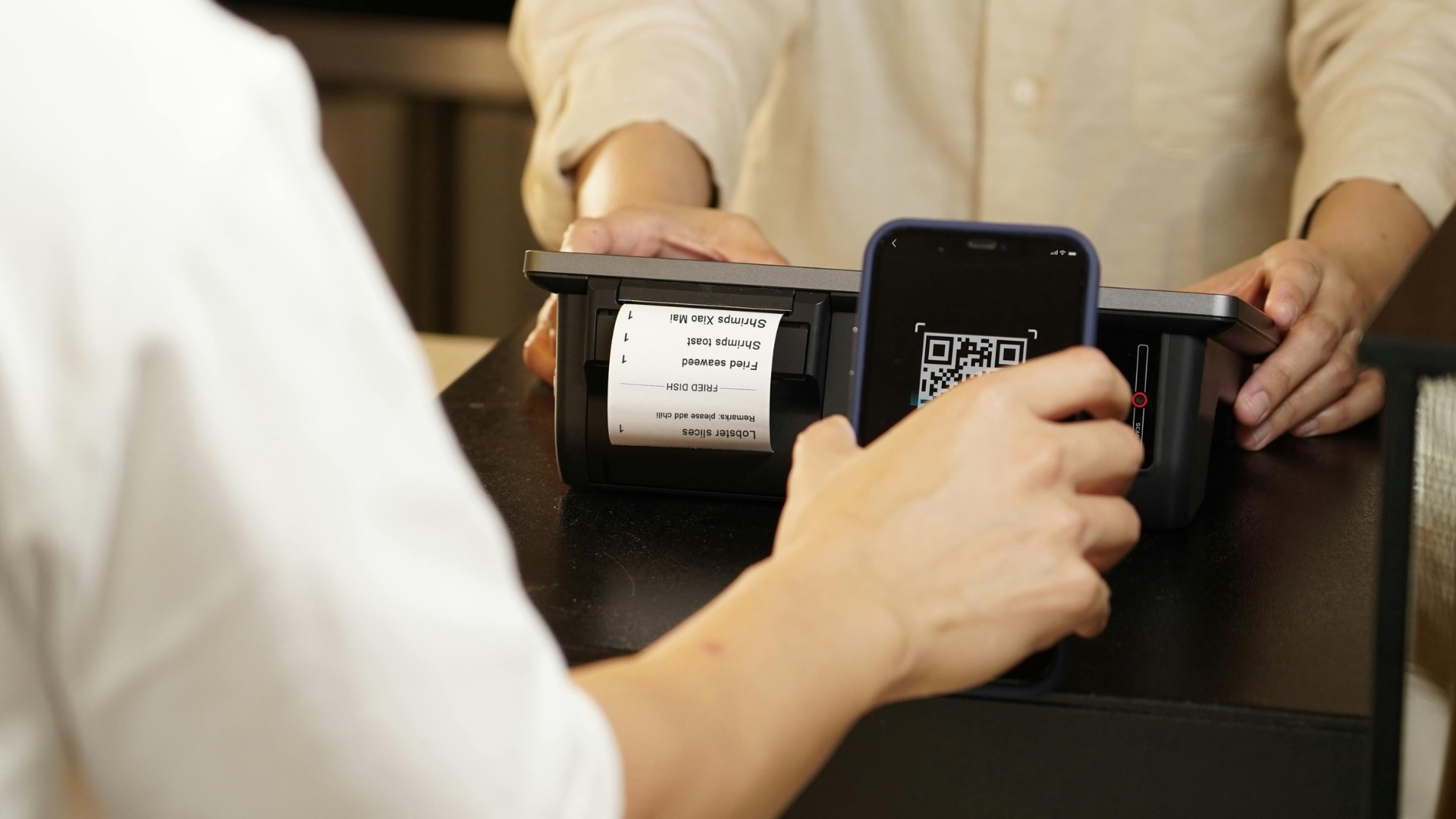
Barcodes have been used in retail, inventory, logistics and healthcare industries to manage and identify products for over 50 years. There are around 30 different major barcode formats that are used to support the tracking, identification and visibility of physical objects. But, with the development of technology, the use of 2D barcodes has increased due to their digital capabilities.
The most common forms of 2D barcodes are QR codes, which are used to share URL links, social media pages, contact information and to make payments. In this blog post, we’ll compare QR codes vs traditional barcode technology to help you determine which solution best suits your business needs 👇
What is a QR code and how does it work?
In 1994, Masahiro Hara and Takayuki Nagaya at DENSO Wave’s invented the QR code; vitally changing the way we use barcode technology today.
A QR code is a square or rectangular shaped barcode that contains several small, individual black dots and white spaces. Compared to traditional 1D barcodes that can store about 20 digits, QR codes can handle several hundred times more information, as confirmed by the technology’s inventors👏
A QR Code can store up to 7,089 numeric characters or 4,296 alphanumeric characters, including URL links. This is what makes it the perfect barcode to use in marketing, as users can quickly access information with their smartphone camera and be directed to the chosen URL in seconds.
When you scan a QR code with the camera on your smartphone, you will be directed to the chosen link or page, and have access to this data without the need for an app. Simply follow these steps on your chosen smartphone:
- Select the rear facing camera
- Hold your device in front of the QR code
- Your device will recognise the QR code and show a notification below (in yellow)
- Tap the notification to open the link associated with the QR code
Orca Scan is a free barcode scanning app, available from the iOS and Android app stores, plus it can be installed on dedicated hardware scanners.
Static QR Codes vs. Dynamic QR Codes?
A static QR code is a type of QR code that contains fixed information; it cannot be changed once generated and printed. The data can be a URL, social media page or contact details, and once embedded into the QR code, users can simply scan and access this information (on or offline). However, it does not support tracking or editing, so any updates you make to the URL will result in the QR code breaking. That’s why static QR codes are commonly used for business cards, website links or for WiFi passwords as this data is unlikely to change.
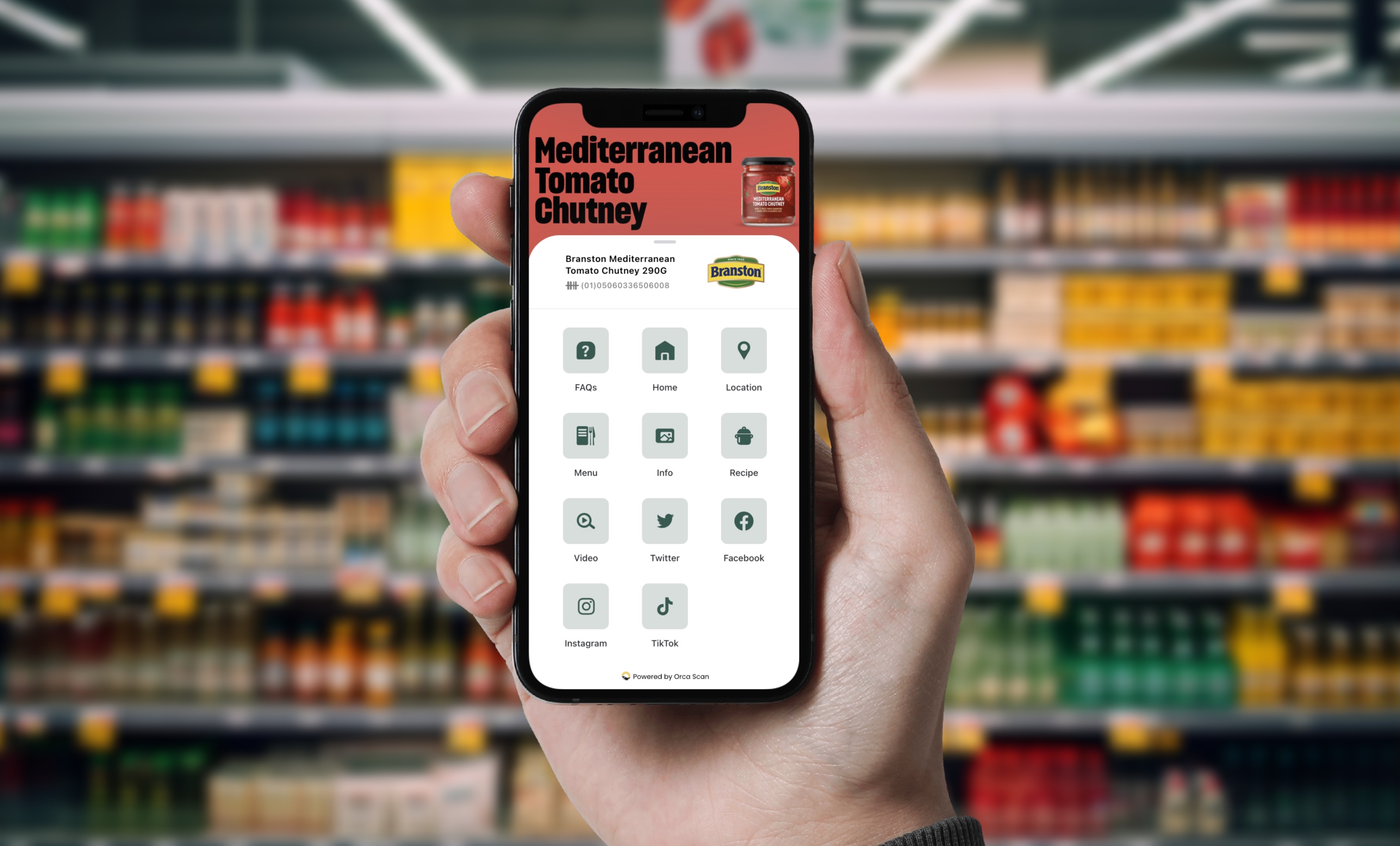
A dynamic QR code is a type of 2D barcode that allows the encoded data to be changed or updated, even after it has been generated. Instead of storing data directly, the QR code contains a short URL that redirects users to the web page or desired end point. The advantage? These QR codes allow real-time edits, so if the URL link changes over time, it will automatically update the code so there is no need for reprints. Dynamic QR codes also support tracking, allowing owners to monitor scanned data, such as the location, time, and device type used. These are commonly used for marketing campaigns, digital menus, and event tickets, as these may require updates or analytics over time.
What industries use QR codes?
You will have seen QR codes used in a variety of different ways over the last few years, as we’ve come to understand how much data they can hold. You can direct customers to an exact URL or product with one quick scan, making them great for B2C uses.
Retail
With the rise of new GS1-powered QR codes, and with the approach of Sunrise 2027, many retail brands are starting to move towards using QR codes over traditional 1D barcodes. See an example below of how JUX Foods use QR codes to future-proof the brand.
Hospitality & Restaurants
Many restaurants now use them to direct customers to the menu or website for ordering, you can also collect payments using a QR code and direct customers to submit feedback on their experience.
Event Attendance
Similarly, QR codes are used a lot for events management as it makes it easier to monitor check ins and identify attendees once they’ve enter the event.
Healthcare
HIBIC Barcode are 2D barcodes, often used in healthcare as they can contain a range of information, such as a product’s Unique Device Identifier (UDI), serial number, lot number, or expiration date.
Marketing and Advertising
QR codes have become increasingly popular in marketing campaigns as a way of pushing customers to scan, find out more information or shop through a certain link. Once scanned, the brand can watch a customers journey through the selected URL/ web page and encourage engagement.
What is a barcode and how does it work?
The first barcode was invented by Norman Joseph Woodland and Bernard Silver in 1948. Their initial bullseye-style design was created to tackle inventory management and make it easier for customers to check-out in supermarkets.
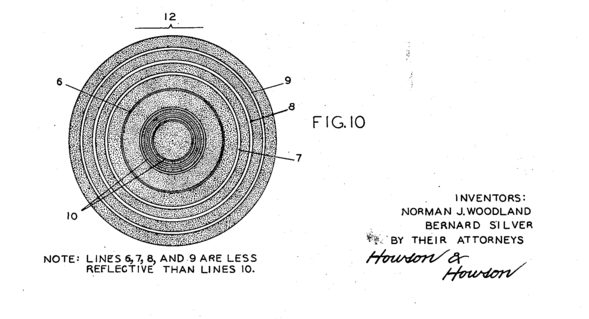
Since then, the 1D barcode has been developed into a horizontal image made up of a variety of black and white lines in different widths and spaces, used to encode information onto physical object labels. You’ll find 1D barcodes in different formats, the most common are:
- UPC-A - Universal Product Code-A are mainly used in the North American retail industry for checkouts and inventory tracking. This barcode encode a unique 12-digit number to identify each item.
- UPC-E - A Universal Product Code-E barcode is compressed and encodes 12-digits into six. Used mostly in North American retail on smaller items with limited label space.
- EAN-13 - Is similar to UPC-A, but is used for sales and inventory around the world. The barcode uniquely identifies products with a 13-digit code.
- EAN-8 - A compact version of the EAN-13 barcode which is designed for items with limited labelling space, as it encodes the information into an 8-digit code.
- UDI - Unique Device Identification barcodes are the global standard barcode, used to identify medical devices. A UDI barcode is broken into two components, the Device Identifier (DI) and the Product Identifier (PI).
- Code 39 - Encodes letters, numbers, and special characters, up to 43 characters. This barcode is popular in the automotive industry, and warehouse labelling.
Using Orca Scan, you can scan a barcode with your smartphone by simply holding the camera over the barcode. The camera will take a quick photograph of it and extract all necessary data into your Orca sheet.
Whereas, with a traditional barcode scanner or reader, the scanner will shine an LED light onto the barcode, generating a pattern that mimics the black and white stripes so that the data can be sent to the computer programme.
What industries use traditional barcodes?
Retail and E-commerce
UPC-A, UPC-E and EAN-8 barcodes are most commonly used in the retail industry for checkouts, product labelling and inventory management. You’ll also see EAN-13 barcodes used for worldwide inventory tracking.
Manufacturing, Warehouse & Supply Chain
For package and shipping tracking, Code 128 barcodes are perfect due to their high data density and ability to hold alphanumeric characters.
For tracking parts in the automotive industry, and for labelling warehouse stock or units, Code 39 barcodes are used as they hold a mixture of letters, numbers and special characters up to 43 characters.
Healthcare and Pharmaceutical
HIBC __ barcodes used to identify and track healthcare-related items, such as prescription drugs, medical equipment, blood products and IV bags. Whereas, UDI barcodes are used to identify and track medical devices in the supply chain. They are essential for reporting defects or incidents relating to a specific medical device, but also for inventory management.
Logistics and Transportation
Code 93 barcodes are often used in logistics and inventory management as they have a high data density and can encode extended ASCII characters, up to 84 characters long. Similarly, ITF (Interleaved Two of Five) barcodes encode up to 14 numeric digits, used mainly for logistics and tracking packages.
QR Codes vs Barcodes: Key Differences 🔄
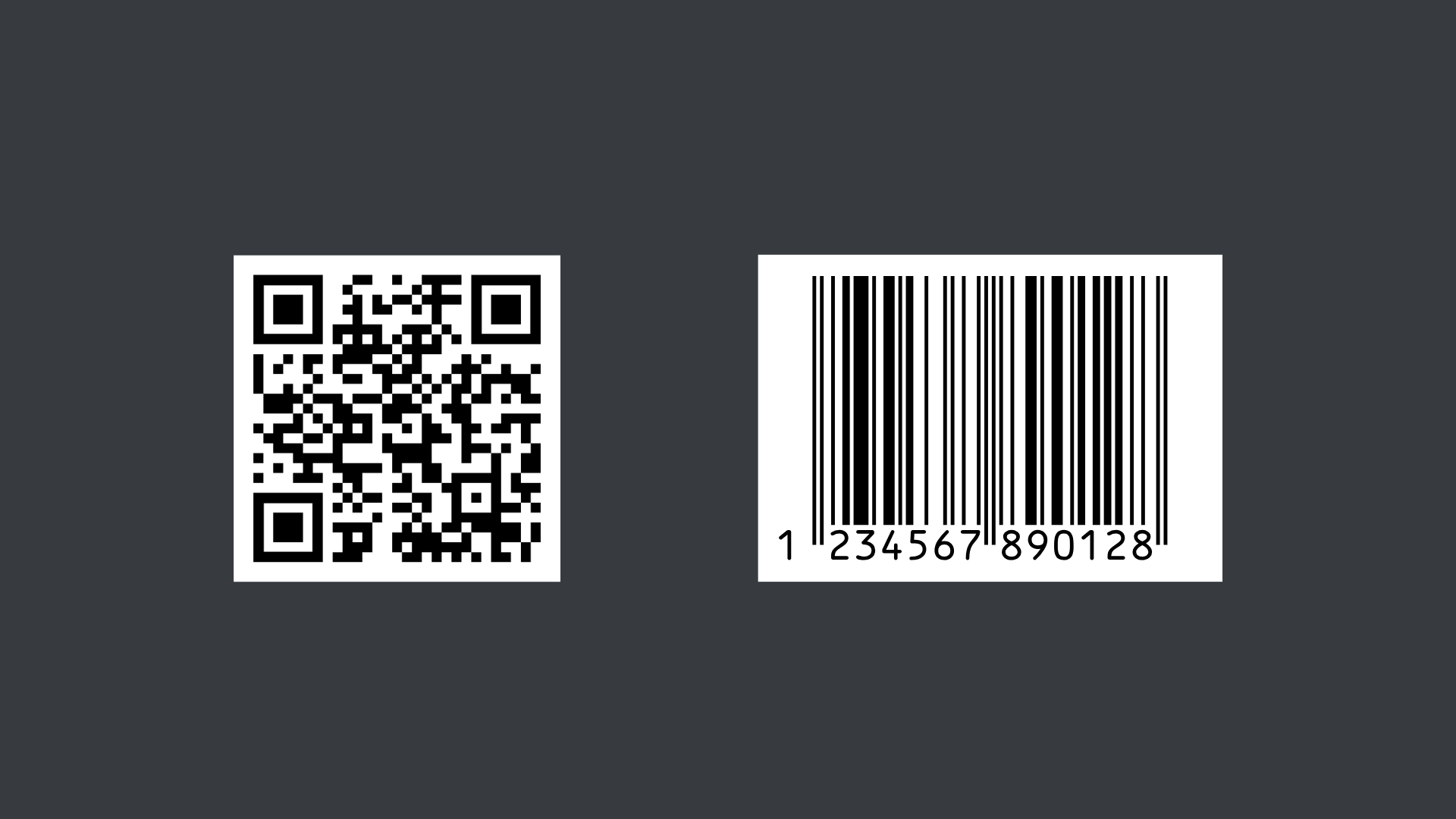
Looking at the difference between QR codes and barcodes will help you choose the right solution for your tracking needs 👀
| Feature | QR code | Barcode |
|---|---|---|
| Capacity | Up to 4,296 characters | Up to 100 characters |
| Scanning Tech | Smartphones, iPads, Barcode scanners | Smartphone, Barcode scanners |
| Correction Capabilities | QR codes have 7-30% data recovery capabilities, using Reed-Solomon algorithm | Barcodes can be easily damage by handling, weather or poor printing, effecting its capabilities to scanning |
| Directional Flexibility | Multi-directional scanning | Unidirectional scanning |
How to choose the right barcode for your business?
Making the QR code vs barcode decision doesn’t have to be complicated! To figure out which is best for your business, ask yourself these following questions:
- What type of objects need barcodes?
- Are you selling directly to customers?
- Are you sending products to couriers/ warehouses/ supplies?
- Do you need to track the full journey of the package?
Check out the case studies below which should help you decide 👇
How JUX Use Dynamic QR codes to Connect with Customers
Food-tech brand JUX Foods are paving the way for nutritious plant-based supplements to be used in our everyday cooking. What’s unique about their approach, is their clever dried food technology, inspired by NASA.
On JUX Foods products, the team are using new GS1-powered QR codes to connect with customers long after they’ve left the shops. Our Digital Link solution harnesses the power of these QR codes, allowing the JUX team to create a unique landing page for each product, sharing URLs, social media pages, recycling information, recipes and more via one single QR code.
The QR code has given the team insights into their customers’ wants and needs from the brand, showing how customers connect with the brand, which links are most used and where they make regular purchases 👏 Read the full story here.
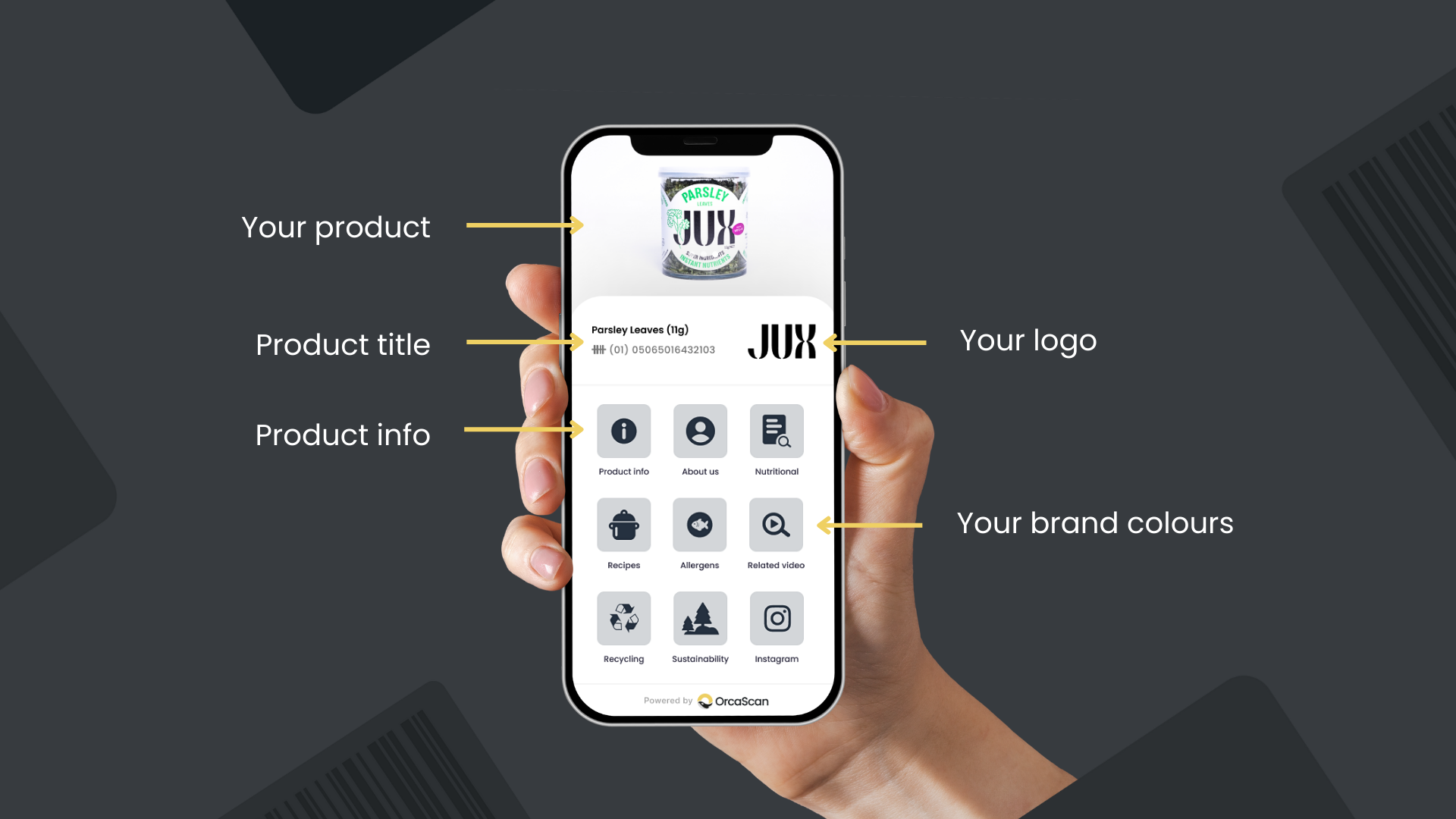
How a construction site used Static QR codes to Save Money
During COVID-19, an enlightened project manager at one of the top construction firms in the USA found Orca Scan, and saved their team over $10k a month by using track and trace QR codes registered to each worker.
The team efficiently managed the safety and security of over 400 construction site workers using only a smartphone and static QR codes on all hard hats👏
The process was simple, as the workers entered the site, the QR code on their hat was scanned using Orca Scan on a smartphone 📲 (similar to a dedicated QR code attendance system), and then this data was stored on a dedicated Orca Sheet, which provided accurate workforce numbers in real-time. Read the full story here.
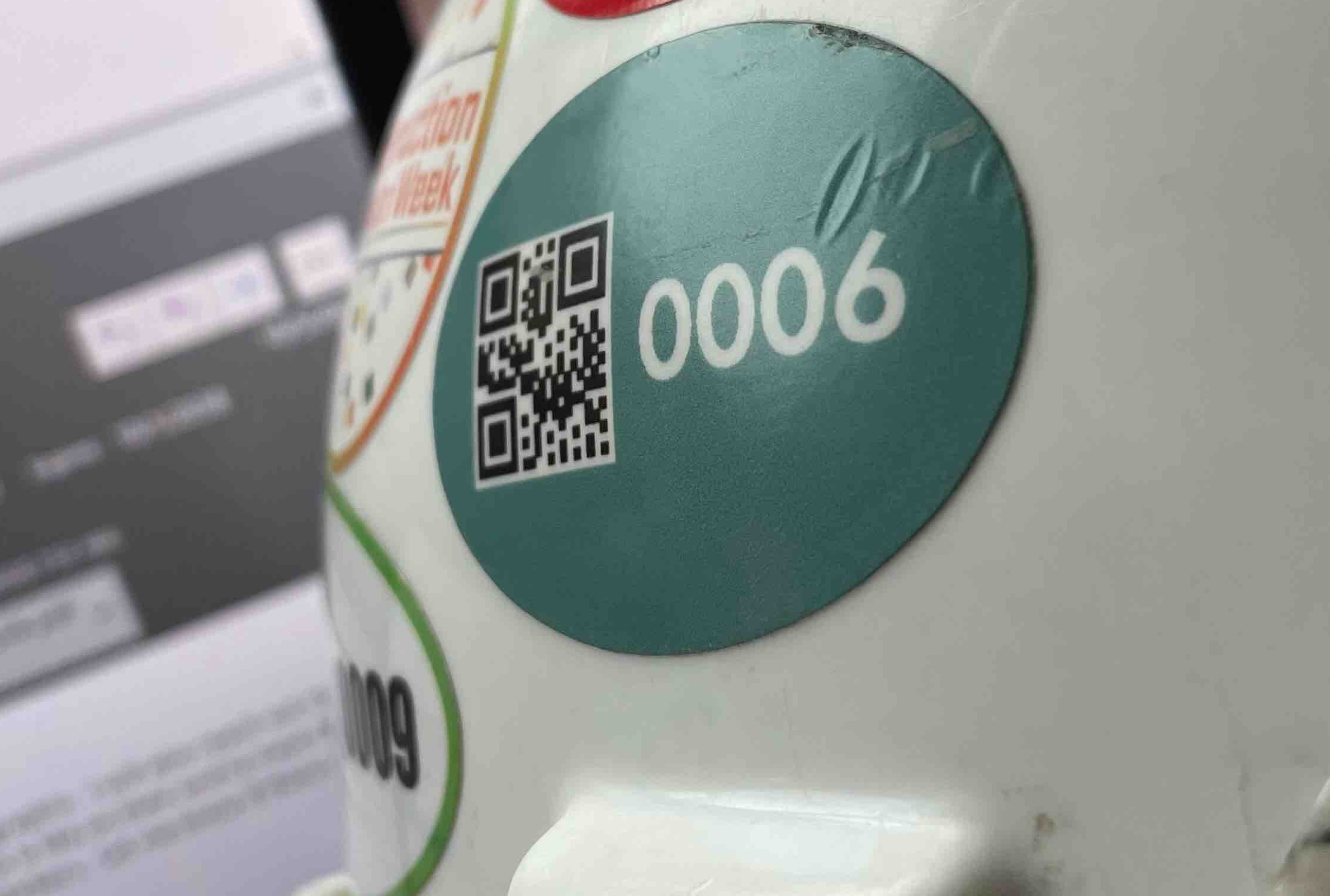
How Transit use UPC Barcodes to Track Returns
One of the largest auto parts warehouses in eastern Canada, Transit, are using Orca Scan to enhance the efficiency of their returns department by implementing a barcode tracking system.
Employees simply scan the UPC barcode on a returned package, and data is automatically extracted and populated into an Orca Scan sheet so the teams know where each parcel is at all times.
What would take the team a few hours to complete, now takes 10 minutes to complete a pallet full of returned packages 🎉
Read the full story here.
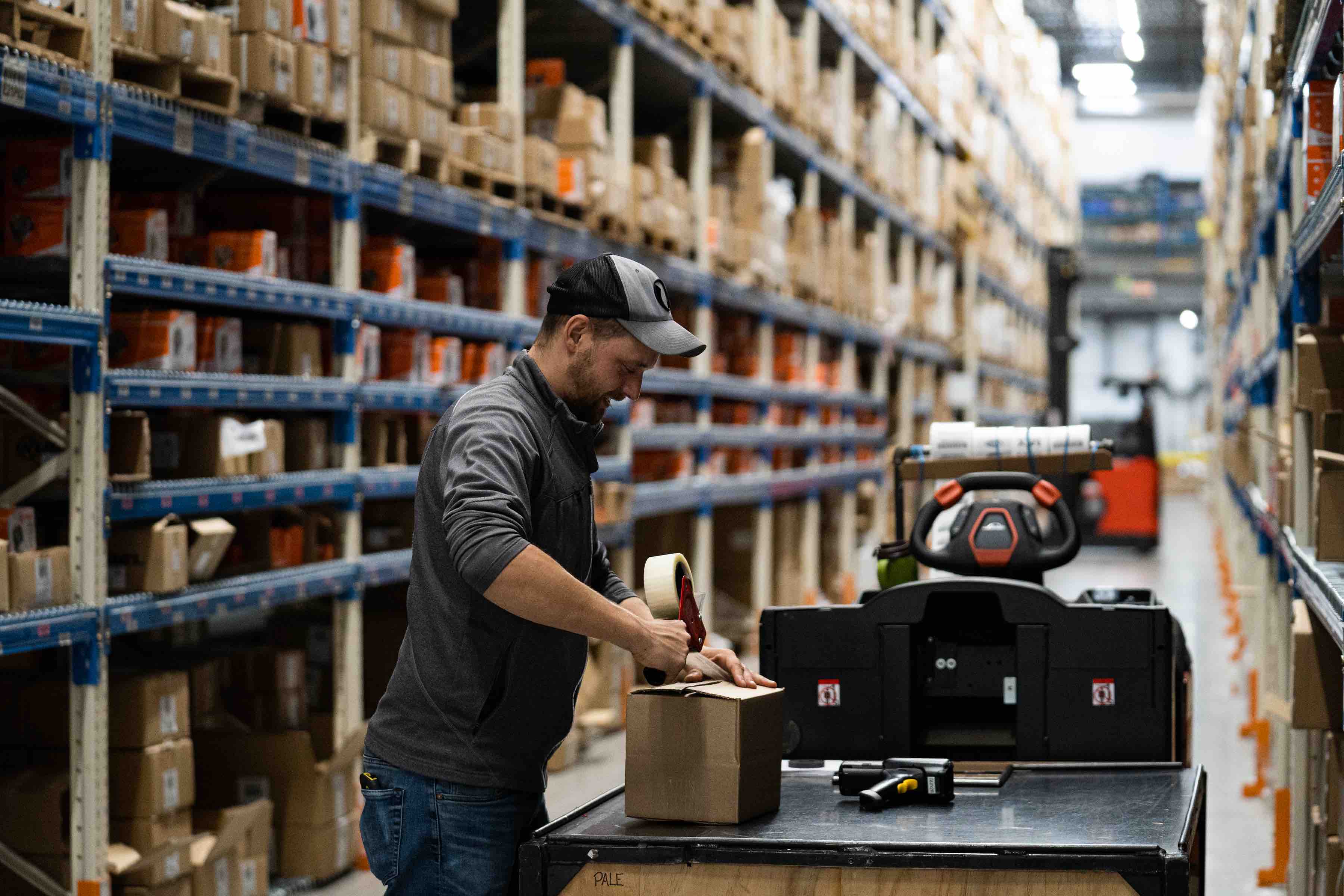
QR Code Barcode FAQS
Can QR codes replace barcodes entirely?
No, we don’t think that 1D barcodes will become obsolete, however, Sunrise 2027 is the suggested year that retail industries will have the ability to scan 2D barcode at POS.
How long do QR codes last?
A QR code will not expire, but if a web or product link is changed or broken after the QR code has been printed then it will no longer work. Static QR codes cannot be changed after printing, however a Dynamic QR Code can be edited and updated after printing.
Can barcode scanners read QR codes?
Some barcode scanners can capture 1D & 2D barcodes. See our selection of guides to find which scanners we accommodate, and what barcodes they scan.
What are the security differences?
1D barcodes have simple security features due to their simple design, making them easy to copy. Whereas, 2D barcodes offer higher levels of security, like encryption and password protection to help keep data safe.
How do I create my own barcodes?
Barcodes are easy to create and generate using our Free Barcode Generator. You can then use the barcodes on physical objects.
QR codes can be easily scanned using smartphone cameras to depict information, whereas 1D barcodes are easier to scan using traditional scanners. Our mobile app, allows you to scan a range of barcodes and extract information into your sheet.
Can I track QR codes using Orca Scan?
Yes. With Orca Scan, you can track anything, at any time, from any industry with our fully customisable system.
We’ve created several out-of-the-box solutions for a range of tracking needs, including 👇
- Tracking Inventory
- Tracking Vehicles
- Cycle Count Tracking
- Medical Device Tracking
- Fire Extinguishers Tracking
- Book Barcode Tracking
You can check out our full list of solutions.
Can I scan QR codes and barcodes with Orca Scan?
Yes, our free Orca Scan app can scan and capture information from various barcode formats, from QR codes to traditional formats such as UPC-A, UPC-E, EAN-13, EAN-8, Code 128, and more. Once you scan a barcode, the app will automatically populate this data into your sheets 👏
Need help choosing between QR codes and traditional barcodes for your business?
Whether you choose to use QR codes, traditional barcodes, or both for your business tracking or product labelling, Orca Scan is your one-stop shop for all things barcodes where you can scan, track and export all your data from your smartphone.
Orca Scan is a GS1 UK-approved barcode tracking app that can be downloaded and installed on any Apple or Android device, including DataLogic, Honeywell and Zebra barcode scanners.
Download the free Orca Scan app today and get scanning.
